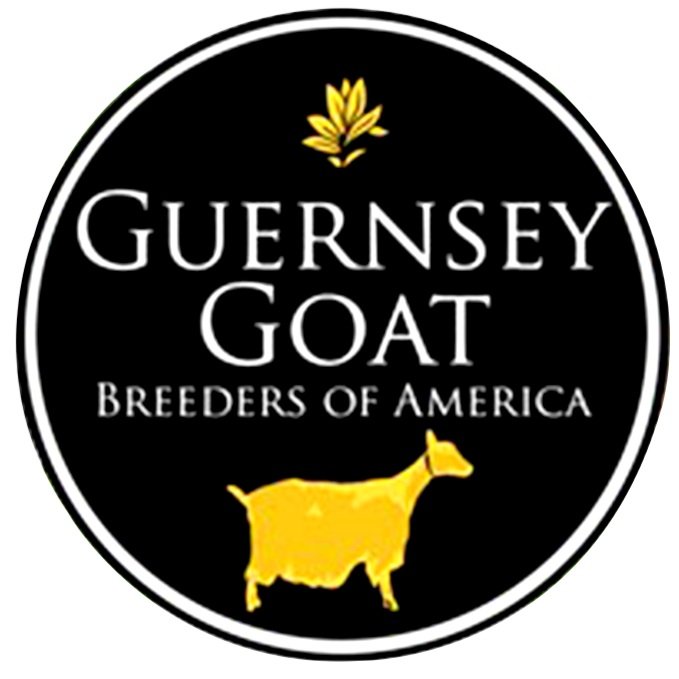
Breeding Up Program
In the United States, Guernsey goats are a relatively new breed. Purebred Golden Guernseys (GG) were imported from England once in 1996, and only a handful are still alive. However, several pioneering American breeders used imported and domestic GG semen and bucks, British Guernsey (BG) bucks, and Herd Book 2 (HB2) bucks to produce Guernsey goats through breeding up programs.
A breeding up program involves the use of a foundation alpine-type dairy doe and semen from a purebred or British Guernsey sire. Each successive generation is also bred to an HB2, BG or GG buck and, therefore, the Guernsey genetics are increased until the status of British Guernsey (7/8ths GG) is reached.
To be registered as a BG, one parent may be a GG and one a BG, both parents may be BG, OR three of the four grandparents must be a GG or a BG and the sire or dam of the fourth must also be a GG or BG.
“A breeding up program involves the use of a foundation dairy doe and semen from a purebred or British Guernsey sire in order to introduce Guernsey genetics into the lineage.”
These steps will also contribute to breeding up for the ADGA herdbook, expected to be available in 2018. There will be an open herdbook with ADGA patterned after the LaMancha Herdbook. ADGA requires that three successive generations meet breed standard for females to be American of the breed. It takes one additional generation for males to be American of the breed. With an open Purebred herdbook it takes an additional 3 generations to reach Purebred status. HB1 females will be the equivalent of 1st generation American Guernseys. HB2 and BG(1) males and females will also be American Guernseys. If both parents are BG, the offspring will be Purebred Guernseys in the ADGA herdbook.
ADGA will permit crosses with Nubians and LaManchas, however, due to incorrect ear type it will take longer to produce an animal meeting breed standard than crosses with Swiss-type breeds. The generations count begins with the first animal meeting breed standard. ADGA will not permit crosses with miniature breeds (Nigerian Dwarf or Pygmy) fiber (Angora & Cashmere), or meat breeds (Boer, Spanish, Kiko, Savannah, Myotonic etc.).
The steps of the breeding up program are illustrated below. (These photos showing the direct lineage of a breeding up program are courtesy of Joan Stump. Each goat is the offspring of the previous goat.)
-

1) IR (Identification Register)
Any female dairy goat of any age.
(Nubian, LaMancha, Miniature, and fiber or meat goat breeds are not allowed).
-

2) SR (Supplementary Register)
Female of any age with a GG, BG or HB2 sire. 1/2 British Guernsey.
SR does will be Experimental or Grade Experimental in the upcoming ADGA Herdbook.
-

3) FB (Foundation Book)
Female with GG, BG, or HB2 sire and SR dam.
3/4 British Guernsey.
FB does will be Experimental or Grade Experimental in the ADGA Herdbook.
-

4) HB1 (Herd Book)
Female with GG, BG, or HB2 sire and FB dam.
7/8 British Guernsey.
HB1 does will be American in the ADGA Herdbook.
-

5) HB2 (Herd Book)
Female or male with GG, BG, or HB2 sire and HB1 dam.
15/16 British Guernsey.
HB2 does and bucks will be American in the ADGA Herdbook.
-

6) BG (British Guernsey)
Female or male goat.
One parent may be HB2 and the other parent must be BG or GG.
If one parent is HB2, 3 of the four grandparents must be BG or GG.
Full British Guernsey.
First generation BG will be American in the ADGA Herdbook. Subsequent generations will be Purebred in the ADGA Herdbook.
